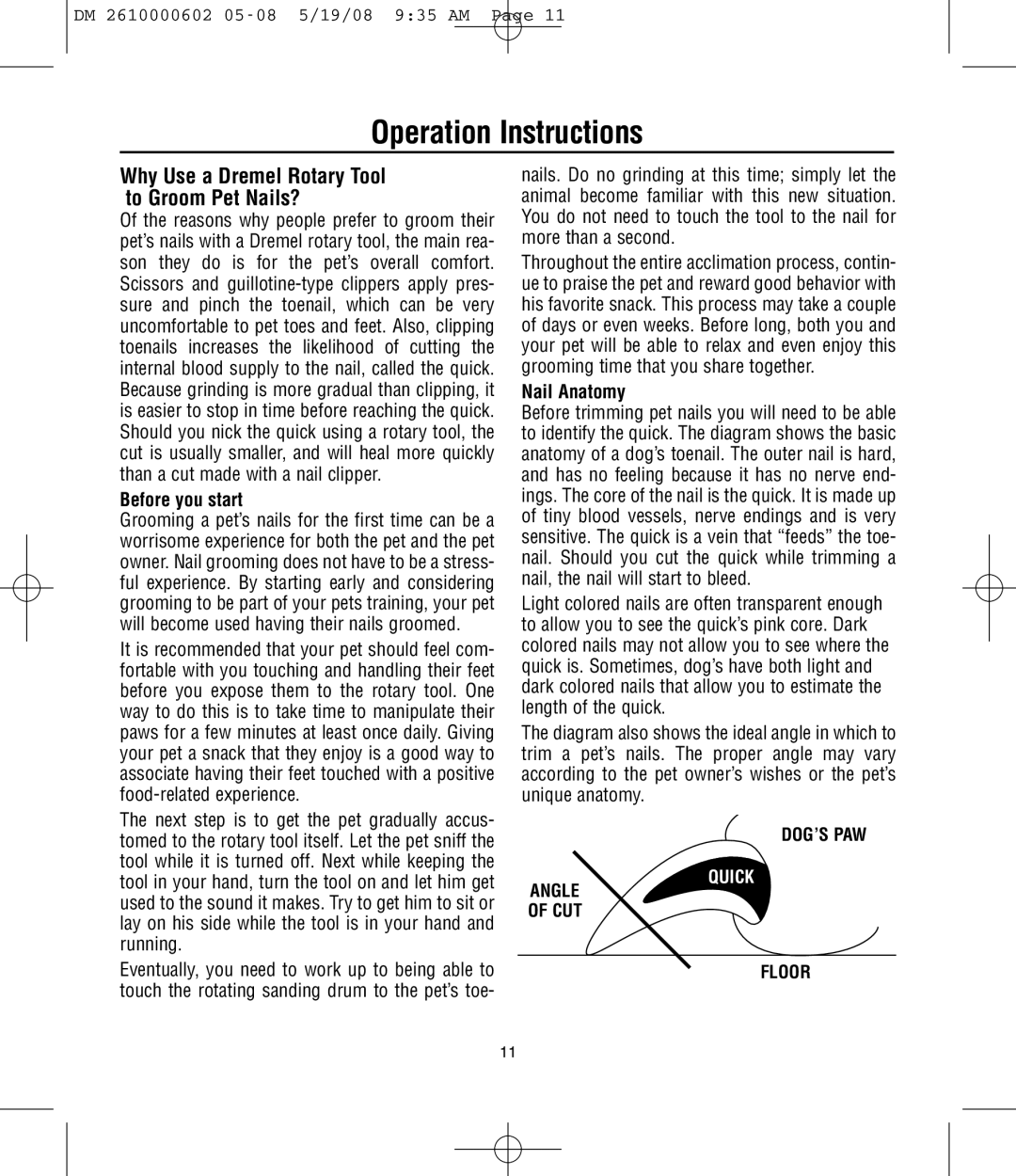
DM 2610000602 05-08 5/19/08 9:35 AM Page 11
Operation Instructions
Why Use a Dremel Rotary Tool to Groom Pet Nails?
Of the reasons why people prefer to groom their pet’s nails with a Dremel rotary tool, the main rea- son they do is for the pet’s overall comfort. Scissors and
Before you start
Grooming a pet’s nails for the first time can be a worrisome experience for both the pet and the pet owner. Nail grooming does not have to be a stress- ful experience. By starting early and considering grooming to be part of your pets training, your pet will become used having their nails groomed.
It is recommended that your pet should feel com- fortable with you touching and handling their feet before you expose them to the rotary tool. One way to do this is to take time to manipulate their paws for a few minutes at least once daily. Giving your pet a snack that they enjoy is a good way to associate having their feet touched with a positive
The next step is to get the pet gradually accus- tomed to the rotary tool itself. Let the pet sniff the tool while it is turned off. Next while keeping the tool in your hand, turn the tool on and let him get used to the sound it makes. Try to get him to sit or lay on his side while the tool is in your hand and running.
Eventually, you need to work up to being able to touch the rotating sanding drum to the pet’s toe-
nails. Do no grinding at this time; simply let the animal become familiar with this new situation. You do not need to touch the tool to the nail for more than a second.
Throughout the entire acclimation process, contin- ue to praise the pet and reward good behavior with his favorite snack. This process may take a couple of days or even weeks. Before long, both you and your pet will be able to relax and even enjoy this grooming time that you share together.
Nail Anatomy
Before trimming pet nails you will need to be able to identify the quick. The diagram shows the basic anatomy of a dog’s toenail. The outer nail is hard, and has no feeling because it has no nerve end- ings. The core of the nail is the quick. It is made up of tiny blood vessels, nerve endings and is very sensitive. The quick is a vein that “feeds” the toe- nail. Should you cut the quick while trimming a nail, the nail will start to bleed.
Light colored nails are often transparent enough to allow you to see the quick’s pink core. Dark colored nails may not allow you to see where the quick is. Sometimes, dog’s have both light and dark colored nails that allow you to estimate the length of the quick.
The diagram also shows the ideal angle in which to trim a pet’s nails. The proper angle may vary according to the pet owner’s wishes or the pet’s unique anatomy.
DOG’S PAW
QUICK
ANGLE
OF CUT
FLOOR
11
